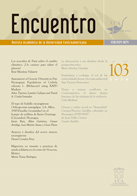Assessment of Genetic Diversity in Five Nicaraguan Populations of Cedrela odorata L. (Meliaceae) using RAPD Markers
DOI:
https://doi.org/10.5377/encuentro.v0i103.2690Resumen
The goal of this study was to assess the genetic diversity of Nicaraguan populations of Cedrela odorata using Random Amplified Polymorphic DNA (RAPD) markers. Thus, genomic DNA was isolated from leaf samples collected from ninety-two trees belonging to five Nicaraguan natural populations of C. odorata. The mean number of alleles per locus, effective number of alleles per locus, percentage of polymorphic loci, genetic diversity (He) of Nei and diversity index (Ho) of Shannon were estimated for each population assuming that the populations were in Hardy-Weinberg equilibrium. Total genetic diversity was partitioned in intrapopulational and interpopulational diversity using Nei’s genetic differentiation (GST) and through an Analysis of Molecular Variance (AMOVA). The ΦST matrix was used to construct a dendrogram by the neighbor-joining method. According to values of both He and Ho, Esquipulas (Deparment of Matagalpa) presented the lowest diversity level; while La Trinidad (Department of Estelí) showed the highest diversity level. Genetic differentiation was calculated obtaining a GST value of 13.36%. AMOVA also showed a similar differentiation value ΦST =13.81%). Neighbour-joining dendrogram clustered the five populations in two groups, where the group formed by La Trinidad and El Refugio (Department of Granada) presented the biggest differentiation. Correlation between genetic and geographical distances was not found
Keywords: Cedrela odorata, Conservation, Genetic Diversity, Nicaragua, RAPD
Descargas
Descargas
Publicado
Número
Sección
Licencia


